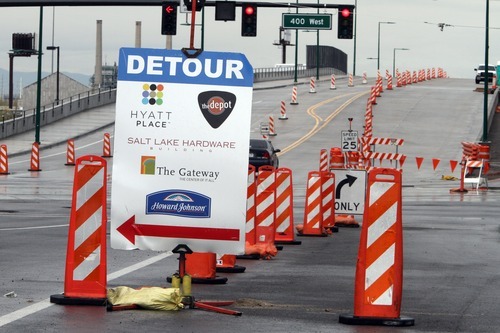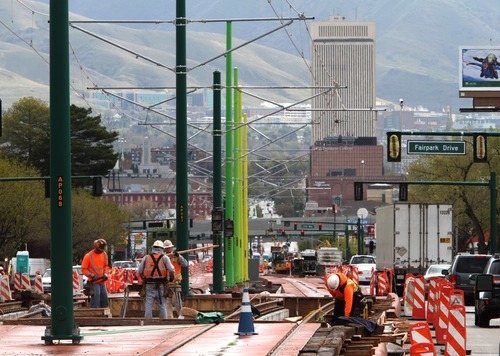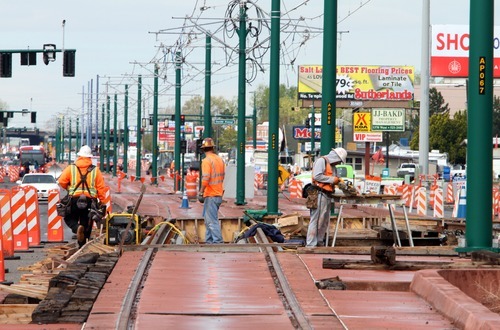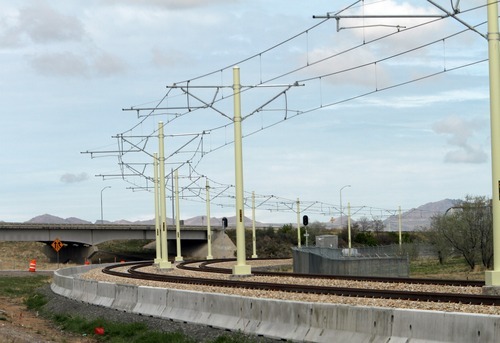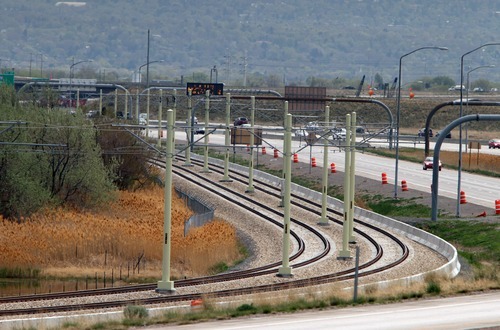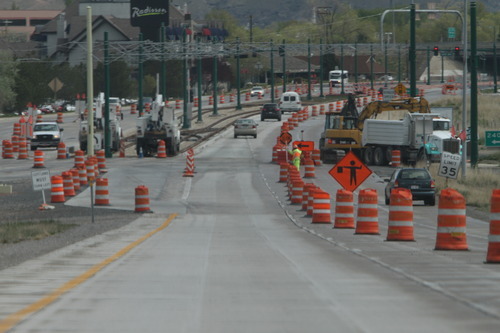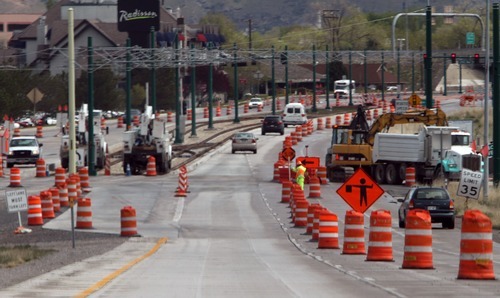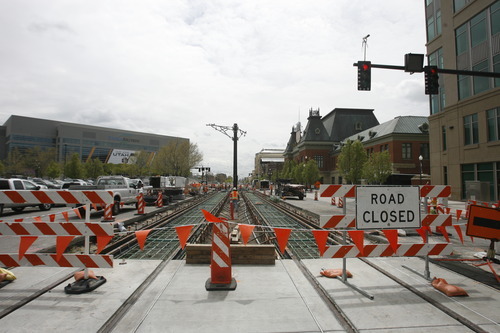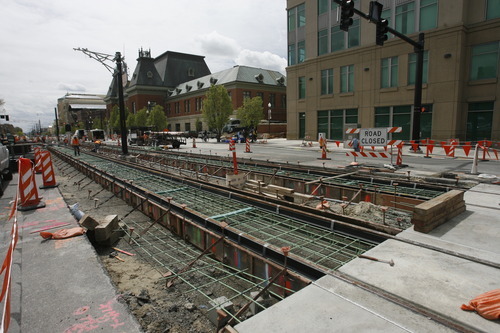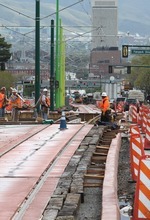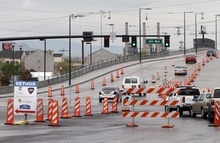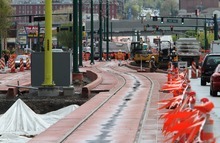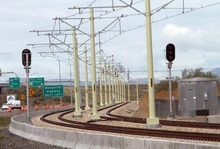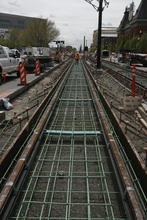This is an archived article that was published on sltrib.com in 2012, and information in the article may be outdated. It is provided only for personal research purposes and may not be reprinted.
Light is finally appearing at the end of the tunnel for the new airport TRAX line.
"The last big push will be this spring and summer," said Jim Webb, project manager for the Utah Transit Authority, noting the project is 80 percent complete. "We will probably be substantially complete in the fall of this year."
That will be followed by an estimated six months of system testing with trains on the track. The line is expected to open for passengers sometime in early 2013 —which is actually years ahead of the original projected completion date of 2015.
It will end years of suffering for businesses along North Temple caused by construction there. Officials also see it as the start of a bright future, believing that the new line can help the surrounding North Temple corridor to become perhaps a national model for redevelopment.
But first comes a lot of construction this summer season before the six-mile section of track is completed to travel from the Arena Station (at EnergySolutions arena), turning on 400 West to North Temple, traveling across the new viaduct there, along North Temple and out to the airport.
Scheduled to begin in the upcoming week, UTA officials plan to halt for several weeks all TRAX trains at the Arena Station to allow installation of new tracks and switching gear at the corner of South Temple and 400 West. A temporary "bus bridge" will take TRAX customers to the Planetarium, Old Greek Town and intermodal hub stations from there.
"A ton of planning has gone into that," to find ways to continue to provide access to the Gateway, the arena and other businesses in the area during that major piece of construction, Webb said.
Other major construction at the moment is atop the new North Temple viaduct — which opened to motor traffic last year. TRAX will have a station on top of that bridge, which will connect via escalators and elevators to a FrontRunner commuter rail station beneath it.
Also under construction is a "welcome center" at the airport, where the new TRAX line will end. It should be completed in the fall.
That is when work on North Temple itself is also expected to be completed. The street will have two lanes of traffic in each direction — after having long been restricted often just to one lane during construction. It will also have bicycle lanes, plus TRAX in the middle of the street. Salt Lake City Mayor Ralph Becker has said North Temple will soon be the city's first "complete road" designed to handle mass transit, cars, bicycles and pedestrians well.
The UTA board has also approved names of new stations on the line: North Temple Bridge/Guadalupe for the station atop the North Temple Viaduct; Jackson/Euclid for the station at 820 West; Fairpark for the station at 1150 West; Power Station at 1500 West; 1940 W. North Temple (with no additional name); and Airport Station.
UTA also won a $425,000 grant from Rocky Mountain Power to install solar panels on the canopies of four stations along the heart of North Temple. "They will supply power for signs and other operations at the stations," Webb said, as well as feed excess power into the TRAX system. He said special meters and displays at the stations will show riders how much power the solar panels are providing and saving.
The new airport line will also be colorful — with color-colored power poles at each station and along the line.
Webb said the city helped to fund aesthetic improvements to the line, including terra cotta colored trackway along North Temple, tan crosswalks and some decorative walls.
"They really want it to feel and look like an urban corridor that gets redeveloped over time. This will encourage that development — and it has already started that momentum," Webb said.
In March, the city and UTA held a conference to tell area businesses and residents how they hope the new line will turn the North Temple area into a forerunner of what they hope to see throughout the Wasatch Front during the next 30 years. They are eyeing transit projects to handle an expected 67 percent growth in population.
They hope a third of the regional population will cluster in new high-density town centers built around transit stations, including along North Temple. Many buildings would have businesses on the first floor, offices on the second and residences above that. They city has changed zoning ordinances to allow that.
Matt Sibul, chief planning officer for UTA, noted at the conference that stations near the Utah State Fairpark are about halfway between the airport and downtown — and vacant land for sale across from the fairpark could accommodate a project the size of downtown's new City Creek Center, offering development opportunities.
The airport line is projected to become an extension of the green line to West Valley City — offering direct service from the suburban Valley Fair Mall at one end of the line to the airport at the other.
Someday, UTA may also offer along the same tracks direct service without transfers between the airport and the University of Utah — but UTA General Manager Michael Allegra says that will not happen for some time, even though he knows many riders want it.
He said UTA is not in financial position to come up with the extra trains and drivers needed for that. He said its studies show the most efficient configuration for now if for the green line to go from West Valley City to the airport, and for the red line to continue between the university and South Jordan.





